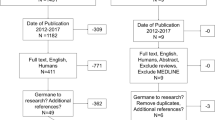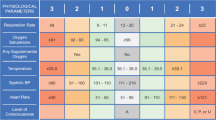Abstract
Sepsis mortality is heavily influenced by the quality of care in hospitals. Comparing risk-standardized mortality rate (RSMR) of sepsis patients in different states in the United States has potentially important clinical and policy implications. In the current study, we aimed to compare national sepsis RSMR using an interactive web-based dashboard. We analyzed sepsis mortality using the National Inpatient Sample Database of the US. The RSMR was calculated by the hierarchical logistic regression model. We wrote the interactive web-based dashboard using the Shiny framework, an R package that integrates R-based statistics computation and graphics generation. Visual summarizations (e.g., heat map, and time series chart), and interactive tools (e.g., year selection, automatic year play, map zoom, copy or print data, ranking data by name or value, and data search) were implemented to enhance user experience. The web-based dashboard (https://sepsismap.shinyapps.io/index2/) is cross-platform and publicly available to anyone with interest in sepsis outcomes, health inequality, and administration of state/federal healthcare. After extrapolation to the national level, approximately 35 million hospitalizations were analyzed for sepsis mortality each year. Eight years of sepsis mortality data were summarized into four easy to understand dimensions: Sepsis Identification Criteria; Sepsis Mortality Predictors; RSMR Map; RSMR Trend. Substantial variation in RSMR was observed for different states in the US. This web-based dashboard allows anyone to visualize the substantial variation in RSMR across the whole US. Our work has the potential to support healthcare transparency, information diffusion, health decision-making, and the formulation of new public policies.




Similar content being viewed by others
Abbreviations
- AHRQ:
-
Agency for Healthcare Research and Quality
- AMI:
-
Acute Myocardial Infarction
- CCS:
-
Clinical Classification Software codes
- CMS:
-
Centers for Medicare & Medicaid Services
- HF:
-
Heart Failure
- HLM:
-
Hierarchical linear modeling
- HHS:
-
Health and Human Services
- ICD-9- CM:
-
International Classification of Diseases, Ninth Revision, Clinical Modification
- NIS:
-
National Inpatient Sample
- NQF:
-
National Quality Forum
- RSMRs:
-
Risk Standardized Mortality Rates
- United States:
-
US
References
Fleischmann, C., Scherag, A., Adhikari, N. K., Hartog, C. S., Tsaganos, T., Schlattmann, P., Angus, D. C., Reinhart, K., and International Forum of Acute Care T, Assessment of global incidence and mortality of hospital-treated Sepsis. Current estimates and limitations. Am. J. Respir. Crit. Care Med. 193(3):259–272, 2016. https://doi.org/10.1164/rccm.201504-0781OC.
Gaieski, D. F., Edwards, J. M., Kallan, M. J., and Carr, B. G., Benchmarking the incidence and mortality of severe sepsis in the United States. Crit. Care Med. 41(5):1167–1174, 2013. https://doi.org/10.1097/CCM.0b013e31827c09f8.
Bouza, C., Lopez-Cuadrado, T., Saz-Parkinson, Z., and Amate-Blanco, J. M., Epidemiology and recent trends of severe sepsis in Spain: A nationwide population-based analysis (2006-2011). BMC Infect. Dis. 14:3863, 2014. https://doi.org/10.1186/s12879-014-0717-7.
Jones, S. L., Ashton, C. M., Kiehne, L., Gigliotti, E., Bell-Gordon, C., Disbot, M., Masud, F., Shirkey, B. A., and Wray, N. P., Reductions in sepsis mortality and costs after design and implementation of a nurse-based early recognition and response program. Jt. Comm. J. Qual. Patient Saf. 41(11):483–AP483, 2015.
Kortgen, A., Niederprüm, P., and Bauer, M., Implementation of an evidence-based “standard operating procedure” and outcome in septic shock. Crit. Care Med. 34(4):943–949, 2006.
Kumar, A., Ellis, P., Arabi, Y., Roberts, D., Light, B., Parrillo, J. E., Dodek, P., Wood, G., Kumar, A., and Simon, D., Initiation of inappropriate antimicrobial therapy results in a fivefold reduction of survival in human septic shock. Chest. J. 136(5):1237–1248, 2009.
Kumar, A., Roberts, D., Wood, K. E., Light, B., Parrillo, J. E., Sharma, S., Suppes, R., Feinstein, D., Zanotti, S., and Taiberg, L., Duration of hypotension before initiation of effective antimicrobial therapy is the critical determinant of survival in human septic shock. Crit. Care Med. 34(6):1589–1596, 2006.
Micek, S. T., Roubinian, N., Heuring, T., Bode, M., Williams, J., Harrison, C., Murphy, T., Prentice, D., Ruoff, B. E., and Kollef, M. H., Before–after study of a standardized hospital order set for the management of septic shock. Crit. Care Med. 34(11):2707–2713, 2006.
Moore, L. J., Jones, S. L., Kreiner, L. A., McKinley, B., Sucher, J. F., Todd, S. R., Turner, K. L., Valdivia, A., and Moore, F. A., Validation of a screening tool for the early identification of sepsis. J. Trauma Acute Care Surg. 66(6):1539–1547, 2009.
Rivers, E., Nguyen, B., Havstad, S., Ressler, J., Muzzin, A., Knoblich, B., Peterson, E., and Tomlanovich, M., Early goal-directed therapy in the treatment of severe sepsis and septic shock. N. Engl. J. Med. 345(19):1368–1377, 2001.
Zubrow, M. T., Sweeney, T. A., Fulda, G. J., Seckel, M. A., Ellicott, A. C., Mahoney, D. D., Fasano-Piectrazak, P. M., and Farraj, M. B., Improving care of the sepsis patient. Jt. Comm. J. Qual. Patient Saf. 34(4):187–191, 2008.
Peled, A., When transparency and collaboration collide: The USA open data program. J. Assoc. Inf. Sci. Technol. 62(11):2085–2094, 2011.
Coglianese, C., The transparency president? The Obama administration and open government. Governance 22(4):529–544, 2009.
Drye, E. E., Normand, S.-L. T., Wang, Y., Ross, J. S., Schreiner, G. C., Han, L., Rapp, M., and Krumholz, H. M., Comparison of hospital risk-standardized mortality rates calculated by using in-hospital and 30-day models: An observational study with implications for hospital profiling. Ann. Intern. Med. 156(1_Part_1):19–26, 2012.
Barbash, I. J., Zhang, H., Angus, D. C., Reis, S. E., Chang, C.-C. H., Pike, F. R., and Kahn, J. M., Differences in hospital risk-standardized mortality rates for acute myocardial infarction when assessed using transferred and nontransferred patients. Med. Care 55(5):476–482, 2017.
Angus, D. C., Linde-Zwirble, W. T., Lidicker, J., Clermont, G., Carcillo, J., and Pinsky, M. R., Epidemiology of severe sepsis in the United States: Analysis of incidence, outcome, and associated costs of care. Crit. Care Med. 29(7):1303–1310, 2001.
Martin, G. S., Mannino, D. M., Eaton, S., and Moss, M., The epidemiology of sepsis in the United States from 1979 through 2000. N. Engl. J. Med. 348(16):1546–1554, 2003.
Elixhauser A, Steiner C, Palmer L (2014) Clinical Classifications Software (CCS). US Agency for Healthcare Research and Quality, 2014.
Chang W, Cheng J, Allaire J, Xie Y, McPherson J (2015) Shiny: Web application framework for R. R package version 011 1
Mohorovičić S Implementing responsive web design for enhanced web presence. In: Information & Communication Technology Electronics & Microelectronics (MIPRO), 2013 36th International Convention on, 2013. IEEE, pp 1206–1210
Franklin, A., Gantela, S., Shifarraw, S., Johnson, T. R., Robinson, D. J., King, B. R., Mehta, A. M., Maddow, C. L., Hoot, N. R., Nguyen, V., Rubio, A., Zhang, J., and Okafor, N. G., Dashboard visualizations: Supporting real-time throughput decision-making. J. Biomed. Inform. 71:211–221, 2017. https://doi.org/10.1016/j.jbi.2017.05.024.
Dowding, D., Randell, R., Gardner, P., Fitzpatrick, G., Dykes, P., Favela, J., Hamer, S., Whitewood-Moores, Z., Hardiker, N., Borycki, E., and Currie, L., Dashboards for improving patient care: Review of the literature. Int. J. Med. Inform. 84(2):87–100, 2015. https://doi.org/10.1016/j.ijmedinf.2014.10.001.
Stadler, J. G., Donlon, K., Siewert, J. D., Franken, T., and Lewis, N. E., Improving the efficiency and ease of healthcare analysis through use of data visualization dashboards. Big Data 4(2):129–135, 2016.
Raban, M. S., Bamford, C., Joolay, Y., and Harrison, M. C., Impact of an educational intervention and clinical performance dashboard on neonatal bloodstream infections. S. Afr. Med. J. 105(7):564–566, 2015. https://doi.org/10.7196/SAMJnew.7764.
Lindenauer, P. K., Grosso, L. M., Wang, C., Wang, Y., Krishnan, J. A., Lee, T. A., Au, D. H., Mularski, R. A., Bernheim, S. M., and Drye, E. E., Development, validation, and results of a risk-standardized measure of hospital 30-day mortality for patients with exacerbation of chronic obstructive pulmonary disease. J. Hosp. Med. 8(8):428–435, 2013. https://doi.org/10.1002/jhm.2066.
Bernheim, S. M., Grady, J. N., Lin, Z., Wang, Y., Wang, Y., Savage, S. V., Bhat, K. R., Ross, J. S., Desai, M. M., Merrill, A. R., Han, L. F., Rapp, M. T., Drye, E. E., Normand, S. L., and Krumholz, H. M., National patterns of risk-standardized mortality and readmission for acute myocardial infarction and heart failure. Update on publicly reported outcomes measures based on the 2010 release. Circ. Cardiovasc. Qual. Outcomes 3(5):459–467, 2010. https://doi.org/10.1161/CIRCOUTCOMES.110.957613.
Horwitz, L. I., Wang, Y., Desai, M. M., Curry, L. A., Bradley, E. H., Drye, E. E., and Krumholz, H. M., Correlations among risk-standardized mortality rates and among risk-standardized readmission rates within hospitals. J. Hosp. Med. 7(9):690–696, 2012.
Lichtman, J. H., Leifheit-Limson, E. C., Jones, S. B., Wang, Y., and Goldstein, L. B., 30-day risk-standardized mortality and readmission rates after ischemic stroke in critical access hospitals. Stroke 43(10):2741–2747, 2012. https://doi.org/10.1161/STROKEAHA.112.665646.
Acknowledgements
We thank the staff of the Core Labs, the Department of Medical Research, and National Taiwan University Hospital for technical support. Medical wisdom consulting group for technical assistance in statistical analysis.
Funding
This study is supported by the Taiwan National Science Foundation Grant NSC 102–2314-B-002 -131 -MY3; Taiwan National Ministry of Science and Technology Grants MOST 104–2314-B-002 -039 -MY3, and MOST 105–2811-B-002-031. No funding bodies had any role in study design, data collection and analysis, decision to publish, or preparation of the manuscript.
Author information
Authors and Affiliations
Corresponding author
Ethics declarations
Financial Disclosure and Conflict of Interest
None declared.
Conflict of Interest
No Conflicts.
Additional information
Publisher’s Note
Springer Nature remains neutral with regard to jurisdictional claims in published maps and institutional affiliations.
This article is part of the Topical Collection on Systems-Level Quality Improvement
Electronic supplementary material
ESM 1
(DOCX 175 kb)
Rights and permissions
About this article
Cite this article
Lee, MT., Lin, FC., Chen, ST. et al. Web-Based Dashboard for the Interactive Visualization and Analysis of National Risk-Standardized Mortality Rates of Sepsis in the US. J Med Syst 44, 54 (2020). https://doi.org/10.1007/s10916-019-1509-9
Received:
Accepted:
Published:
DOI: https://doi.org/10.1007/s10916-019-1509-9




